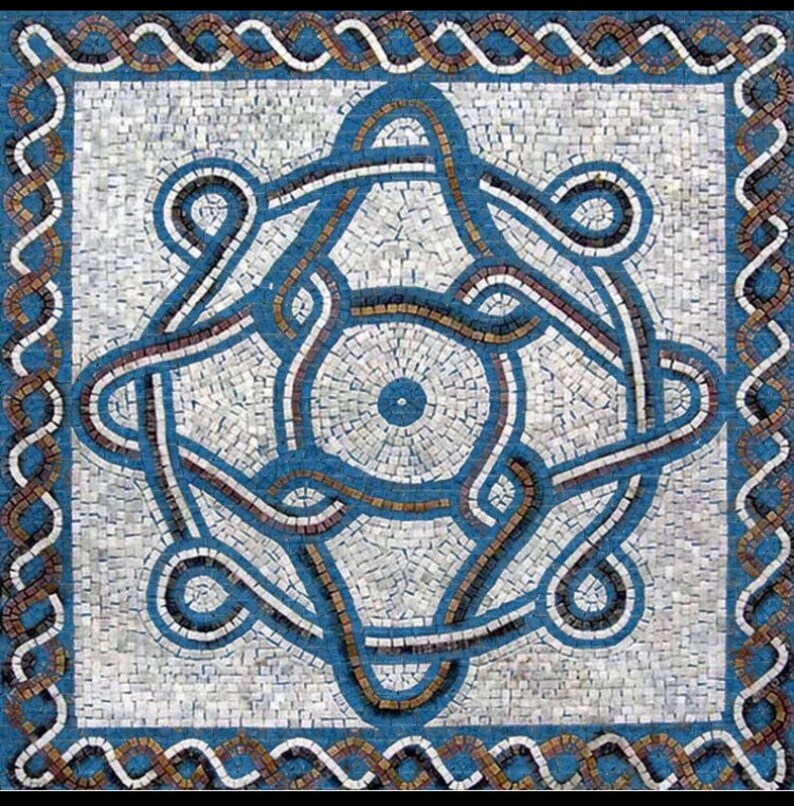

Figural scenes were often taken from history, such as tales of gods and heroes at battles in Homer's Odyssey. Motifs in mosaics ran from the simple to quite complex geometric designs with repeating patterns of a variety of rosettes, ribbon twist borders, or precise intricate symbols known as guilloche. Workmen became alchemists, combining chemical additives from plants and minerals in their recipes to create intense or subtle hues, and to make the glass opaque. Once glass was added to the source material, the colors became enormously varied with an added sparkle and vigor. Opus tessalatum was one that relied primarily on uniform cubical tessarae, and opus vermiculatum used a line of tiny (1-4 mm ) mosaic tiles to outline a subject or add a shadow.Ĭolors in mosaics were made up of stones from nearby or far away quarries some mosaics used exotic imported raw materials. An opus sectile was one that included irregularly shaped blocks, to pick out details in figures. An opus signinum was a layer of cement or mortar simply embellished with designs picked out in white marble tesserae. In his classic text On Architecture, Vitrivius also identified a variety of methods for mosaic construction. George Houston (1968) / Institute for the Study of the Ancient World The workmen sifted powdered marble on top of the painting, and as a final finishing touch laid on a coating of lime and sand to fill in any deeper remaining interstices. The tesserae were pressed down into the mortar to set them at a common level and then the surface was ground smooth and polished. the "nucleus" layer was laid, a layer of cement made of powdered brick or tile and lime, not less than 6 digiti thick (11-11.6 cm)Īfter all that, the workmen embedded the tesserae into the nucleus layer (or perhaps laid a thin layer of lime atop it for that purpose).the "rudus" layer was added and rammed to form a layer of 9 digiti thick (~17 cm).


then a layer of concrete made up of coarse aggregate was placed over that.a rubble layer was spread over the area.the surface was prepared by digging, leveled and rammed for stability.The best source for information on Roman history and architecture is Vitrivius, who spelled out the steps required to prepare a floor for a mosaic. Some of these reserved finer materials and details for the central portions of a pavement some of the Eastern motifs used lead strips to enhance the geometric sections. Mosaics at the thresholds of homes decorated in the eastern style were figural and might have only a casual relationship to the main floors of the houses. Some of these remind the modern viewer of oriental rugs. The Eastern notion of mosaics was more elaborate, including many more colors and patterns, often concentrically arranged with decorative frames surrounding central, often figural panels. Many of the western-style walls and floors are simply colored, black and white. The decorative concept was that of uniformity-a pattern developed in one room or at the threshold would be repeated or echoed in other parts of the house. The western style of mosaic art was more geometric, serving to distinguish functional areas of a house or room. Both were used in various parts of the Roman Empire, and the extremes of the styles are not necessarily representative of finished products. In the Roman period, there were two main styles of mosaic art, called the Western and Eastern styles. Peter Thompson/Heritage Images/Getty Images It's easy to see the fascination: modern gardeners use DIY projects to create their own masterpieces. In North America, the 14th century Aztecs invented their own mosaic artistry. Mosaics continued in use throughout the later Roman Empire, Byzantine and early Christian periods, and there are even some Islamic period mosaics. During that period, mosaics commonly appeared in Roman homes, rather than being restricted to special buildings. Minoan Greeks made mosaics, and later Greeks as well, incorporating glass by the 2nd century AD.ĭuring the Roman empire, mosaic art became enormously popular: most surviving ancient mosaics are from the first centuries AD and BC. The earliest surviving mosaics are from Uruk period in Mesopotamia, pebble-based geometric patterns adhered to massive columns at sites such as Uruk itself. Mosaics were part of the decoration and artistic expression of homes, churches, and public places in many locations around the world, not just Rome.


 0 kommentar(er)
0 kommentar(er)
